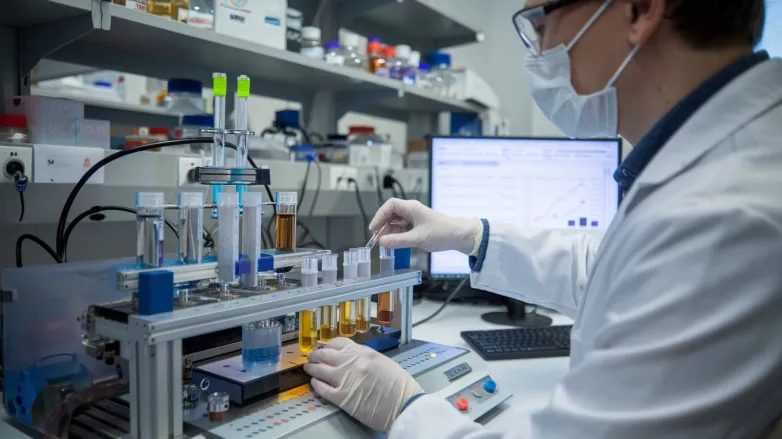IIT Bombay Pushes 4T Perovskite-Silicon Tandem Efficiency Past 29 Percent
- IIT Bombay hits 29.14 % efficiency in four-terminal perovskite-silicon tandem by adding a 3 nm Al₂O₃ passivation layer, edging lab tandems toward 30 %.

Researchers at the Indian Institute of Technology Bombay (IIT Bombay) have achieved a 29.14 % power-conversion efficiency in a four-terminal (4T) perovskite-silicon tandem solar cell—India’s highest reported result to date and one of the best worldwide for the architecture. The advance underscores the growing role of passivation engineering in nudging tandem devices ever closer to the 30 % commercial threshold.
What they built
The IIT Bombay team fabricated an inverted, low-band-gap perovskite top cell based on a Me-4PACz hole-transport layer and a 1.67 eV absorber. The breakthrough came from inserting an ultra-thin (≈3 nm) aluminum-oxide (Al₂O₃) interlayer via atomic-layer deposition, which suppressed interface recombination and lifted single-junction efficiency from 17.1 % to 19.2 %
Two top-cell formats were produced—0.175 cm² and 1.08 cm²—both paired with a 25.5 % crystalline-silicon bottom device in a mechanically stacked 4T configuration. Under standard test conditions, the smaller tandem delivered the headline 29.14 % efficiency, while the larger module reached 26.86 %. Fill factor jumped to 77.4 % with the Al₂O₃ layer, reflecting improved carrier extraction.
Why it matters
-
4T flexibility: Unlike monolithic two-terminal designs, 4T tandems allow each sub-cell to be optimized independently and avoid current-matching losses—ideal for rapid lab-scale iteration.
-
Scalability signals: Demonstrating near-30 % efficiency on an active area >1 cm² suggests the passivation scheme could translate to mini-modules without drastic performance fade.
-
Cost and stability gains: ALD-grown Al₂O₃ is already used in PERC manufacturing, hinting at a clear pathway to industrial adoption with proven durability.
Next steps
The researchers aim to integrate wider-band-gap perovskites for top-cell tuning, refine large-area deposition uniformity and extend damp-heat testing beyond 1,000 hours. If successful, the work could steer India’s nascent tandem-module supply chain toward competitive, high-efficiency products inside the decade.
Also read

